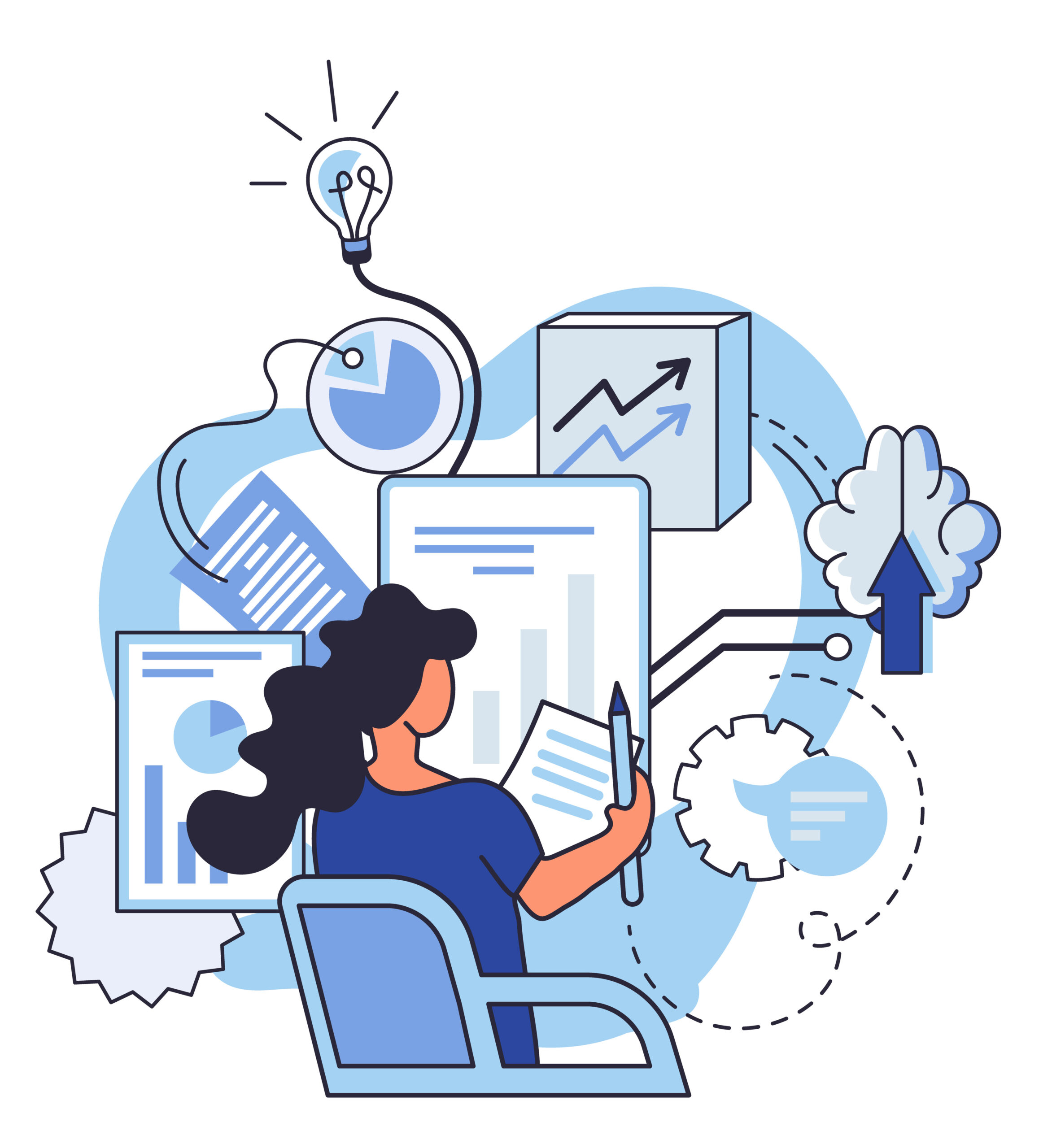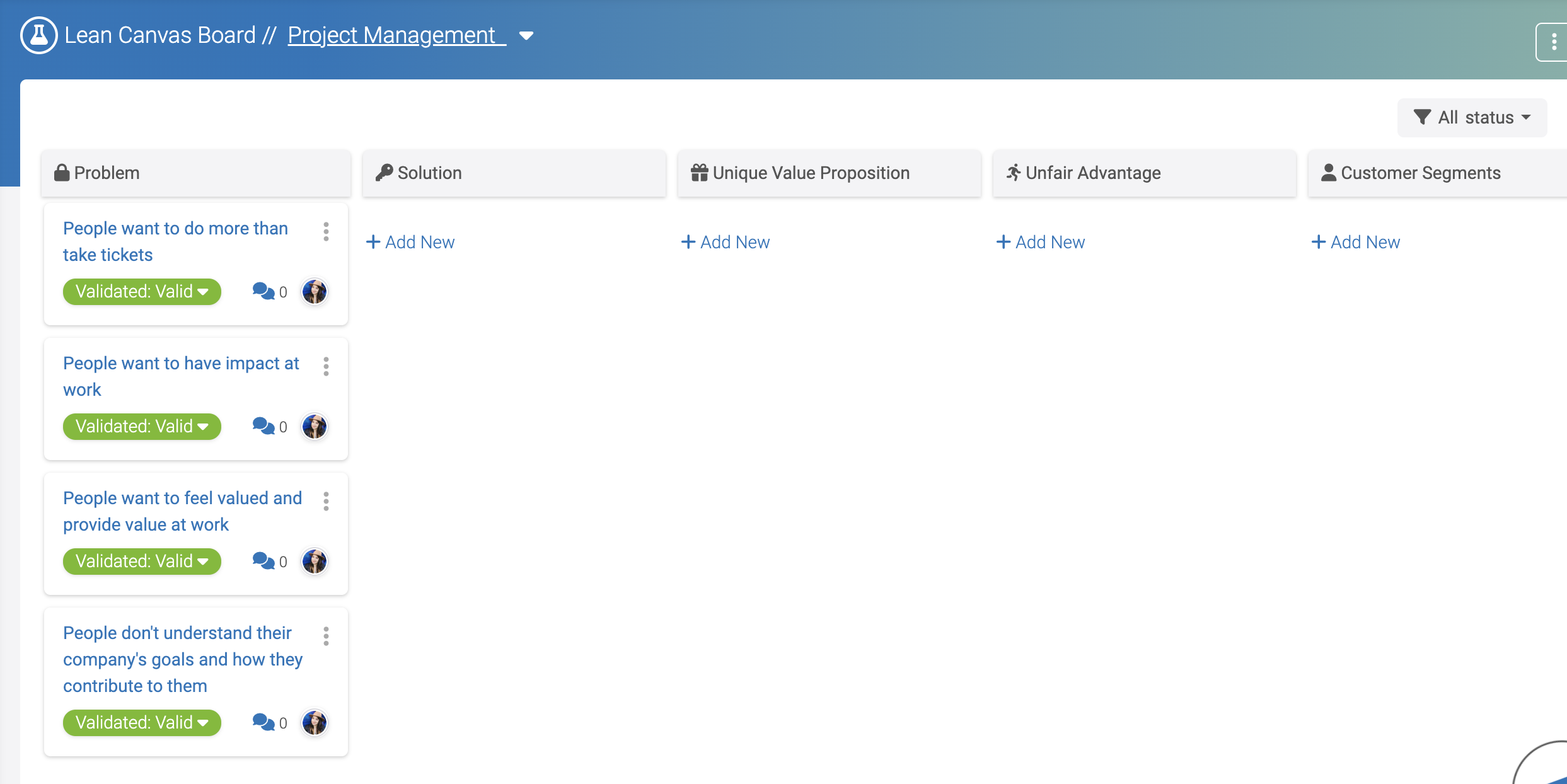Estimated reading time: 6 minutes
The Lean Canvas transcends its role as a mere tool. It’s a paradigm that challenges entrepreneurs to delve into the critical parts of their startup journey. At the core of this framework is the ‘Problems’ block. However, this section isn’t just another box to tick; it is the fundamental essence of successful businesses: identifying and solving customer problems.

At the heart of the Lean Canvas ‘Problems’ block lies a fundamental shift in perspective: a transition from a product-focused approach to a customer-centric one. This transition represents a large shift in the way startups operate. Instead of fixating solely on their offerings, entrepreneurs now must work to understand their customers’ pain points, and more so, walk in the shoes of their customers.
This shift occurs when entrepreneurs work to truly understand what a day in the life of their customers looks like, and the challenges associated with the ‘jobs’ that they are trying to get done. This customer-centric approach serves as a guiding light throughout the startup journey, ensuring that every pivot and strategic decision remains aligned with the real-world problems customers face, all within the realm of the Lean Canvas business model.
Table of contents
- How Can Startups Foster a Problem-Solving Culture Using Lean Canvas??
- What Is the Significance of the ‘Problems’ Block in Lean Canvas for Business Development?
- The Art and Science of Problem Identification
- Embracing the Lean Philosophy in the Problem-Solving Process
- How Can Understanding Customer Problems Influence Various Lean Canvas Elements?
- What are the Potential Roadblocks in the Problem-Solving Process and Mitigation Strategies?
- So What Are the Next Steps and Key Takeaways for Addressing the Problems Block on the Lean Canvas Template?
How Can Startups Foster a Problem-Solving Culture Using Lean Canvas??
As you may have read in Unraveling the Lean Canvas: The Blueprint of Modern Lean Innovation, the Lean Canvas framework isn’t just a one-time exercise as it fosters a culture of problem-solving within the startup. By continually revisiting the ‘Problems’ block and incorporating new insights into their strategies, entrepreneurs cultivate a mindset of continuous improvement. Additionally, this culture of problem-solving extends beyond the initial stages of the business and becomes ingrained in a company’s DNA. It empowers teams to proactively seek out and address challenges, ensuring the business remains adaptable and relevant in an ever-evolving market, all while adhering to the principles of the lean canvas business model.
What Is the Significance of the ‘Problems’ Block in Lean Canvas for Business Development?
Every entrepreneurial endeavor must emerge from a desire to address unique customer challenges and/or unmet needs. Within the structure of the Lean Canvas, the ‘Problems’ block serves as a compass, guiding startups to anchor their strategies around ‘real’ customer pain. By doing so, it ensures that their business models resonate with market demand and remain relevant as they evolve.
The Art and Science of Problem Identification
Understanding customer problems isn’t as simple as it might first seem. To get to the heart of the issue, startups need to evaluate three areas:
Identifying Root Cause
While surface observations immediately highlight challenges, the Lean Startup philosophy pushes you to venture further. It emphasizes the importance of probing beneath the obvious to get a better understanding of the root cause.
Evolving Nature of Problems
The business landscape is fluid. As technology progresses, societal norms shift, market dynamics change, and most importantly, the pain-point of the customer inevitably evolves. It’s imperative for startups to stay agile and receptive to these transitions.
Distinguishing Between Needs and Desires
In the intricate tapestry of consumer behavior, discerning between enduring needs and fleeting desires is crucial. Solutions that cater to customer needs are mostly sustainable and have a higher perceived market value, as opposed to those that merely address nice-to-haves.
Once these areas are addressed, you’ll have a better analysis of your customer problems.
Embracing the Lean Philosophy in the Problem-Solving Process
The Lean philosophy, with its emphasis on iterative learning and customer-centricity, offers a structured roadmap for the problem-solving process.
The five steps include:
- Formulating Hypotheses: Start with informed assumptions about your customer problems. Draw from market insights and personal observations to hypothesize the potential challenges faced by your target market.
- Engaging Customers to Validate Assumptions: Interact directly with prospective customers through 1:1 conversation. Firsthand accounts from customers can unearth challenges overlooked in secondary market research. These insights are invaluable for validating or refuting initial hypotheses.
- Prioritizing Problems: Upon identifying multiple customer problems, it’s essential to classify them based on their impact and how often they occur. This aids in determining which customer problems are most critical and need solving.
- Aligning Solutions: Having a clear understanding of your customers’ problems ensures that the proposed solutions are relevant and pertinent to the market’s needs.
How Can Understanding Customer Problems Influence Various Lean Canvas Elements?
Understanding customer challenges in-depth doesn’t exist in isolation. It influences – and is influenced by various Lean Canvas components, including:
- Your Solution: Clearly defined problems directly inform the solutions offered.
- Your Unique Value Proposition: How distinct customer problems are often shape a venture’s unique selling points.
- Customer Segment Refinement: Specific problems and pain-points might be unique to certain demographics. Recognizing this can help fine-tune target market segments.
What are the Potential Roadblocks in the Problem-Solving Process and Mitigation Strategies?
As startups navigate the problem-solving process, they often encounter specific roadblocks. However, with a proactive mindset, these can be transformed into learning opportunities:
- Don’t rely too much on Assumptions: While assumptions provide a starting point, over-dependence without market validation can skew a startup’s direction. Regular market feedback loops are critical.
- Don’t Overkill with Complexity: While some challenges can be multifaceted, there’s value in simplicity. Addressing straightforward, pressing issues often yield substantial market success.
- Don’t Neglect Feedback: Accept constructive criticism and feedback, even if it contradicts initial assumptions – they are invaluable. Critical feedback ensures that the business remains grounded in market realities, even if it goes against your initial beliefs.
So What Are the Next Steps and Key Takeaways for Addressing the Problems Block on the Lean Canvas Template?
The Lean Canvas doesn’t just encourage startups to identify problems; it advocates for an iterative approach to problem refinement, crucial for optimal lean canvas development. Your initial assumptions and hypotheses about customer pain points are merely the first step. Startups must continuously gather feedback, adapt to changing market conditions, and fine-tune their understanding of customer problems, using the Lean Canvas template. In this framework, the ‘Problems’ block is essential. By thoroughly understanding and directly addressing customer needs, problems and pain-points, startups ensure their offerings align with market demands.
In conclusion, the ‘Problems’ block in the Lean Canvas framework isn’t just a checkbox to mark; it’s a cornerstone for entrepreneurial success and business development. This iterative process allows companies to stay nimble and resilient, ready to pivot as needed while keeping their focus squarely on what truly matters to their target audience; and most importantly, all within the structured framework of the lean canvas model. It compels startups to embark on a customer-centric journey, refine their understanding of problems iteratively, and build a culture of problem-solving that sustains them through the trials and tribulations of the business world. By addressing the ‘Problems’ block with dedication and diligence, entrepreneurs lay a solid foundation for enduring success in the competitive landscape.
1Explore More About Lean Startup Philosophy At Leantime, we’re passionate about helping you navigate the world of entrepreneurship and innovation through the lens of the Lean Startup Philosophy. If you’ve found this article intriguing and insightful, you’ll definitely want to check out these recommended reads to dive even deeper into the world of Lean Startup:
For even more articles you may be interested in, check out the links below:



